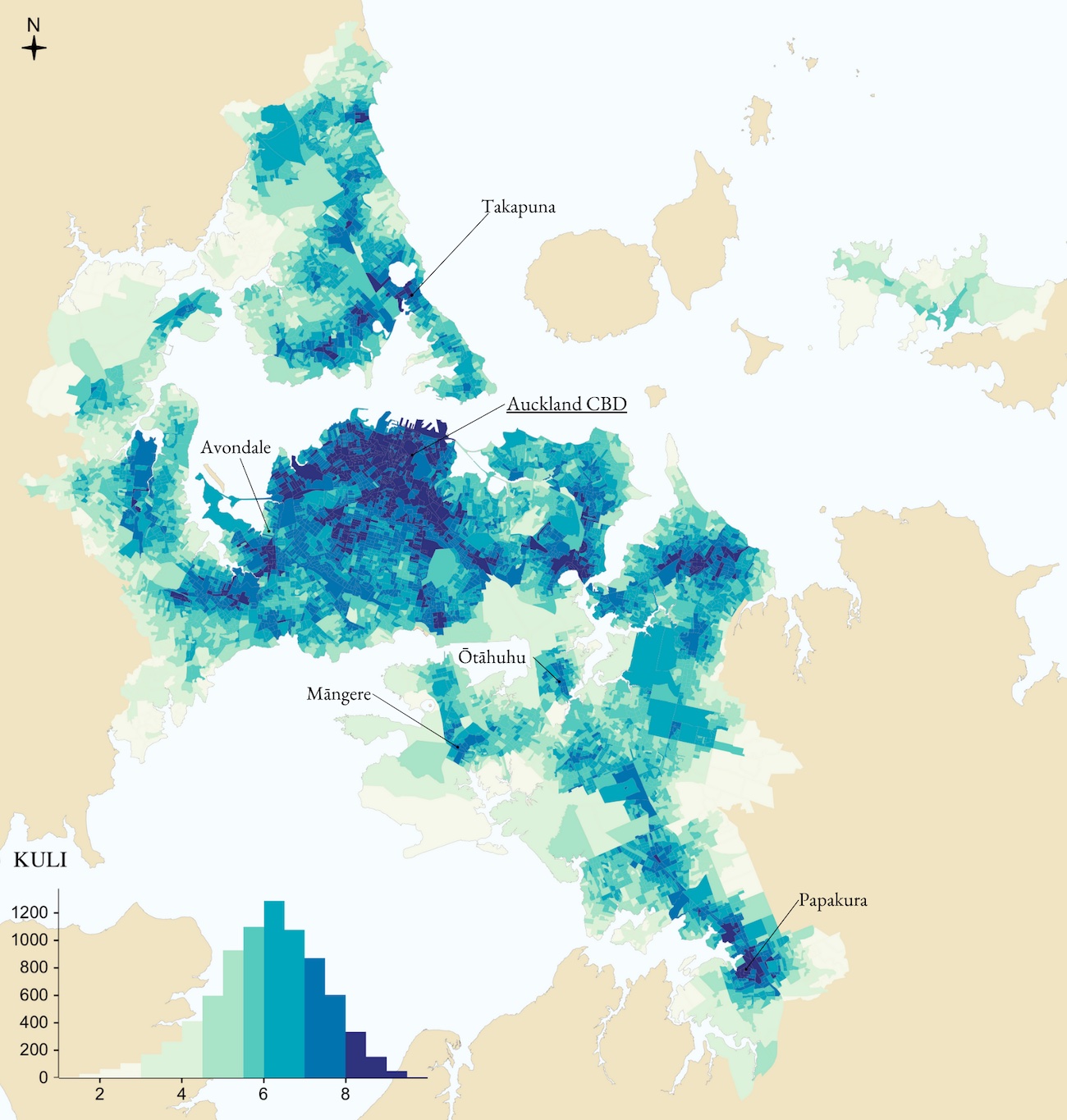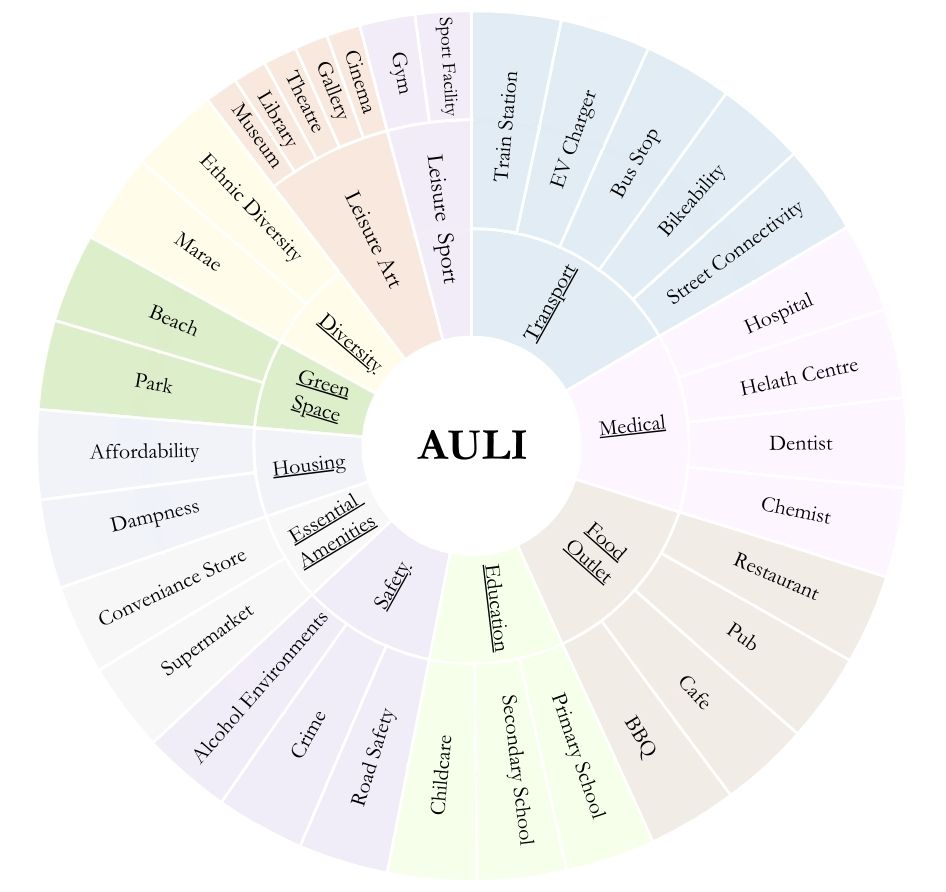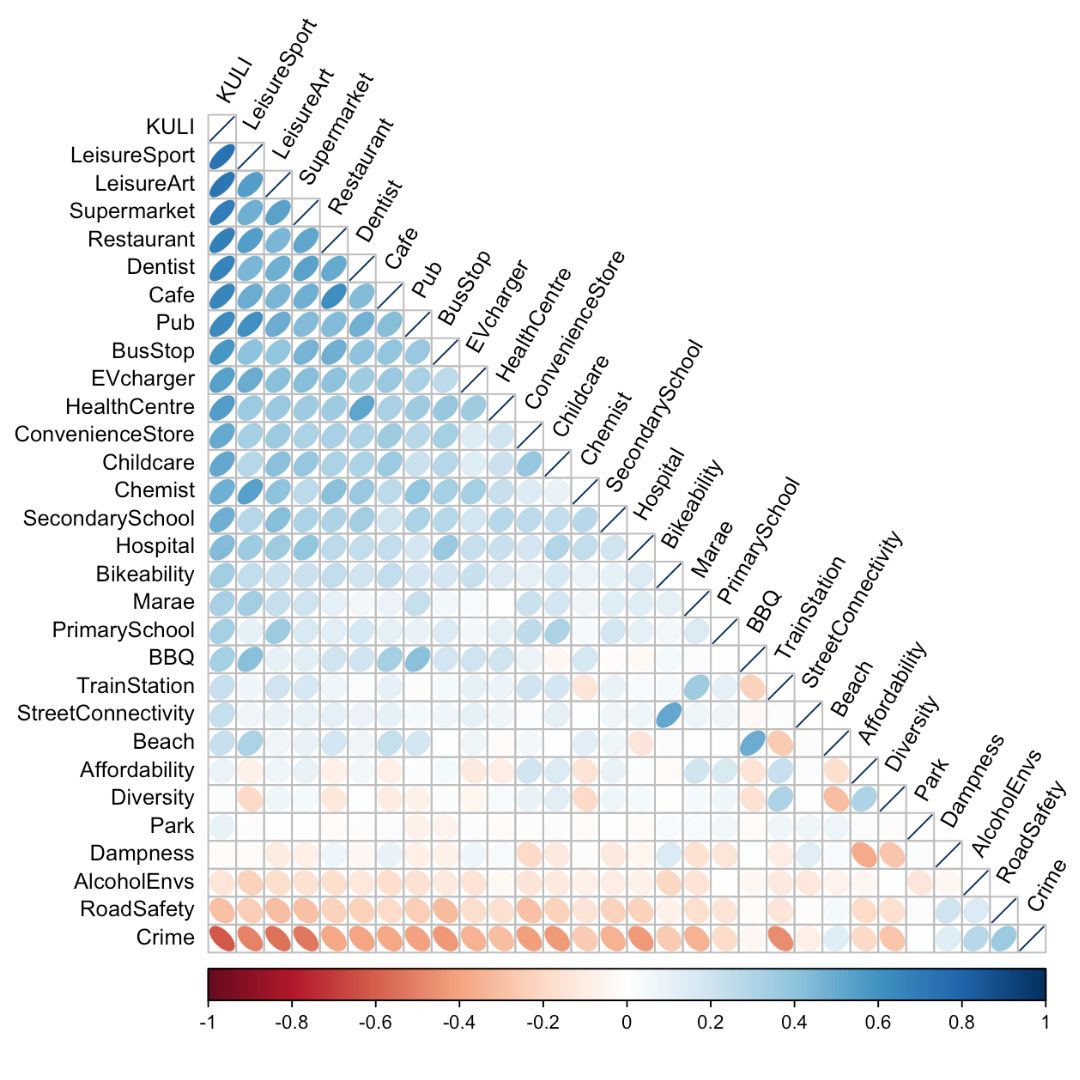Auckland Urban Liveability Index
Research project focused on creating and analysing an urban liveability index for Auckland, New Zealand.
Structure (in short)
Research
First I read about what urban liveability is and decided on the components that would make up the index.
Data Collection
Next, the relevant data were collected from various sources, including OSM and official data portals.
Index Building
The data were transformed into indicators, and aggregated into the composite index.
Results
The final index was visualised and its relations to different socioeconomic variables were analysed.
Discussion
Relevance of the findings for the city of Auckland, and New Zealand was explored.

The final map showing the index in Auckland.

Diagram showing all the components of the AULI

Correlation heatmap of AULI components
Abstract
We present the Auckland Urban Liveability Index (AULI), an indicator that quantifies modern liveability at neighbourhood-level in Auckland. The index comprises 29 variables spanning several components of liveability: social infrastructure, green space, transportation, safety and diversity. Each is documented transparently with accompanying data and code. We find that neighbourhoods with the highest liveability scores have comparatively good public transport provision and are amenable to active travel, and that residents from Pacific and Māori backgrounds disproportionately reside in neighbourhoods containing lower liveability scores. Through local modelling frameworks, we provide useful context on the generalisability of index components that supports transfer of our index to other cities in New Zealand and re-evaluation of our index in light of new data.
Full paper
If you’re interested in this project, let me know and I can share more details.

The vision for liveable Auckland.
